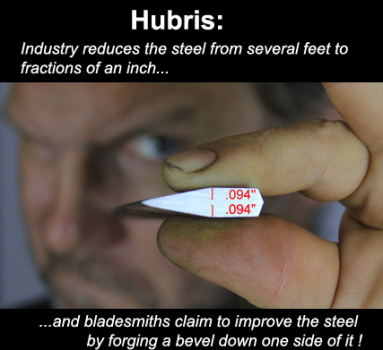Mark Barone
Well-Known Member
I know that sounds confusing but It’s the only way I could think of asking. When I see a block of steel Heated hammered to the shape of a knife, I get that’s forging. But when is it not forging? If I take a bar of stock steel and hammer the clip point of the blade and then Maybe hammer the curve of the handle grip, then grind it down for a better profile. Is that forging also? How many times to I have to hit it with the hammer to consider it forging?

